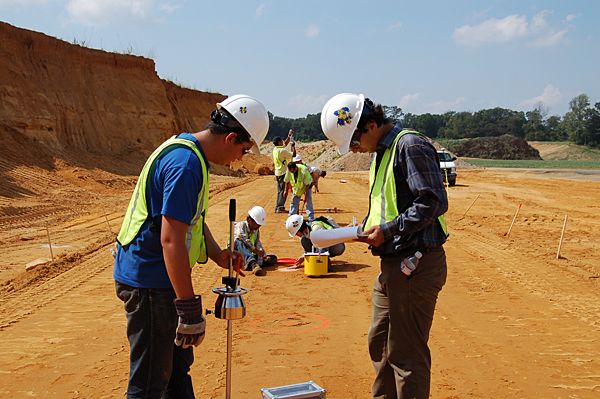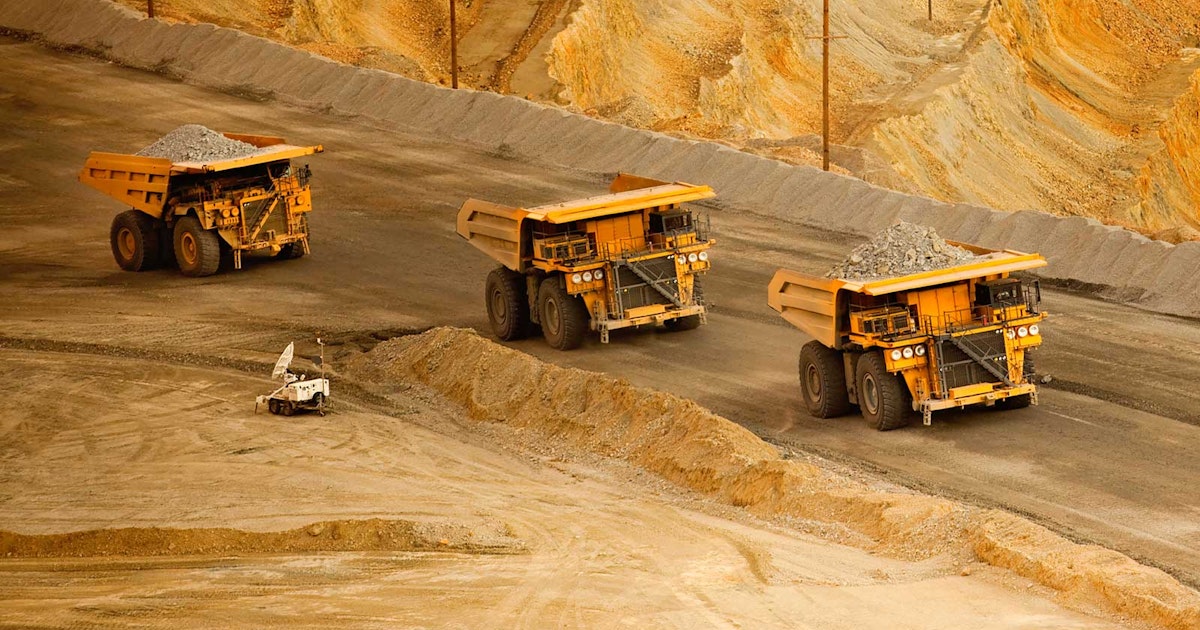Recognizing the Principles: Concerning Geotechnical Engineering in Modern Construction
Recognizing the Principles: Concerning Geotechnical Engineering in Modern Construction
Blog Article
Exploring the Interdisciplinary Nature of Geotechnical Engineering and Its Influence on Ground Improvement and Structure Style
The interdisciplinary nature of geotechnical engineering plays a vital duty fit cutting-edge ground renovation approaches and structure style approaches. By integrating insights from structural, ecological, and geological disciplines, geotechnical designers are furnished to resolve complicated soil habits and site-specific challenges. This joint approach not just boosts the efficacy of strategies such as soil stablizing and vibrant compaction but additionally guarantees that tasks stick to sustainability principles. What ramifications does this interdisciplinary synergy have for future developments in the area, particularly in the context of emerging building and construction innovations?
Introduction of Geotechnical Design
Geotechnical design is a critical branch of civil engineering that focuses on the behavior of earth products and their communication with frameworks. This technique includes the study of soil, groundwater, and rock, intending to comprehend their residential properties and just how they affect the performance of civil engineering jobs. Geotechnical engineers evaluate the hydraulic and mechanical actions of these materials to make sure the security and safety of frameworks such as buildings, bridges, and retaining walls.
The extent of geotechnical design consists of website examinations, soil sampling, and screening, as well as evaluation of soil technicians and rock mechanics. Engineers make use of advanced strategies to assess ground conditions, identify prospective dangers, and style efficient ground enhancement services. This might involve approaches such as dirt stablizing, grouting, and making use of geosynthetics, which enhance the toughness and sturdiness of the ground.
In addition, geotechnical engineering plays a crucial role in foundation design, figuring out proper foundation kinds based upon soil qualities and loading conditions. By including strenuous screening and evaluation, geotechnical engineers contribute dramatically to the sustainability and durability of infrastructure, making sure that frameworks can endure ecological and functional stress and anxieties in time.
Trick Interdisciplinary Relationships

Furthermore, ecological design plays a crucial role in assessing the impact of geotechnical tasks on the bordering ecological community. This partnership is necessary for establishing lasting techniques that reduce ecological destruction during excavation or ground improvement processes.
Additionally, the combination of geotechnical design with geology boosts the understanding of subsurface conditions, promoting even more exact site characterizations (about geotechnical engineering). This relationship aids in danger evaluation, especially in locations vulnerable to landslides or seismic activity, therefore educating threat mitigation strategies
Finally, advancements in technology have resulted in interdisciplinary cooperation with information science and geoinformatics. These fields add to boosted modeling and evaluation strategies, permitting a lot more specific predictions of soil behavior under various problems. Thus, the interconnectedness of these self-controls enriches geotechnical engineering, advertising advancement and performance in structure style and ground improvement.
Ground Enhancement Techniques
Ground improvement strategies are vital methods employed to boost the design properties of soil, therefore raising its load-bearing capability and security. These techniques are especially important in locations where natural dirt problems are inadequate for supporting architectural loads or where environmental variables might compromise dirt stability.
Commonalities enhancement approaches consist of dirt compaction, which enhances thickness and minimizes void areas, and grouting, which entails infusing products into soil to fill spaces and bind fragments together - about geotechnical engineering. Other methods consist of the setup of soil nails and supports, which provide additional assistance, and the use of geosynthetics to strengthen soil frameworks. Deep mixing methods, such as soil-cement columns, can additionally dramatically enhance the strength and stiffness of weak soils
In addition, dynamic compaction and vibro-replacement techniques are typically used to boost soil residential or commercial properties sitting. These methods can mitigate concerns associated with settlement and liquefaction, specifically in seismic areas. By employing a combination of these ingenious methods, geotechnical engineers can successfully address site-specific difficulties, guaranteeing that the foundation systems will certainly execute adequately under prepared for loading conditions, hence adding to total task success.
Foundation Design Factors To Consider
Efficient structure layout factors to consider are critical for the longevity and security of frameworks. A well-designed foundation has to properly sustain the tons of the building while fitting soil conditions, environmental aspects, and potential changes gradually. Secret variables consist of dirt bearing capability, negotiation qualities, and groundwater conditions.
Recognizing the dirt profile through geotechnical investigations is necessary, as it informs the selection of foundation kind-- be it shallow, deep, or specialized approaches such as pile i was reading this foundations or mat structures. The awaited loads, consisting of live, dead, and environmental loads, should be precisely determined to make sure the foundation can resist prospective failing systems, such as sliding, reversing, or excessive negotiation.
Additionally, considerations for frost depth, seismic activity, and potential soil liquefaction in seismic areas are important. In addition, water drainage and wetness control should be incorporated right into the foundation layout to reduce issues connected to hydrostatic stress and dirt disintegration.
Partnership among designers, designers, and geotechnical experts is important to create a detailed structure style that not only fulfills regulative needs but additionally makes certain the lasting efficiency and safety and security of the framework. Inevitably, detailed preparation and cutting-edge options are needed to attend to the complexities integral in structure design.
Study and Best Practices

One notable study involves making use of deep soil mixing in a skyscraper task in a seismic zone. This method significantly boosted the dirt's strength and stability, enabling a more secure and extra efficient foundation system (geotechnical specialist). The project highlighted the importance of choosing appropriate ground enhancement methods based on site-specific problems, consisting of soil kind and loading requirements
One more instance is the application of dynamic compaction for boosting the bearing capacity of weak soils under a commercial facility. This technique effectively lowered settlement issues and improved overall website performance, showing the effectiveness of integrating traditional design experiment contemporary innovation.
Best techniques originated from these situation research studies highlight the requirement of thorough website examinations, cooperation among multidisciplinary teams, and the incorporation of sophisticated modeling tools. By embracing these lessons, geotechnical designers can enhance foundation styles and ground improvement techniques, eventually resulting in more secure and more sustainable construction end results.
Verdict
To conclude, the interdisciplinary nature of geotechnical design dramatically boosts ground enhancement and read the article foundation style. By incorporating concepts from numerous engineering techniques, tailored techniques are created to attend to details obstacles connected to soil residential or commercial properties and ecological effects. This joint technique not just makes sure optimal structure security and safety however likewise promotes lasting construction practices. Proceeded expedition of these interdisciplinary connections will better progress the field, leading to cutting-edge options that respond properly to progressing engineering needs.
The scope of geotechnical engineering consists of website investigations, soil tasting, and testing, as well as evaluation of soil auto mechanics and rock mechanics. The connection in between geotechnical engineering and architectural engineering is especially critical, as the performance of frameworks is heavily affected by dirt behavior and buildings.Common ground enhancement methods consist of soil compaction, which boosts density and minimizes void spaces, and grouting, which involves infusing materials into dirt to fill up spaces and imp source bind particles together. Various other strategies include the installation of soil nails and anchors, which give additional support, and the use of geosynthetics to strengthen soil frameworks. A properly designed structure should adequately sustain the lots of the building while suiting soil conditions, ecological variables, and prospective adjustments over time.
Report this page